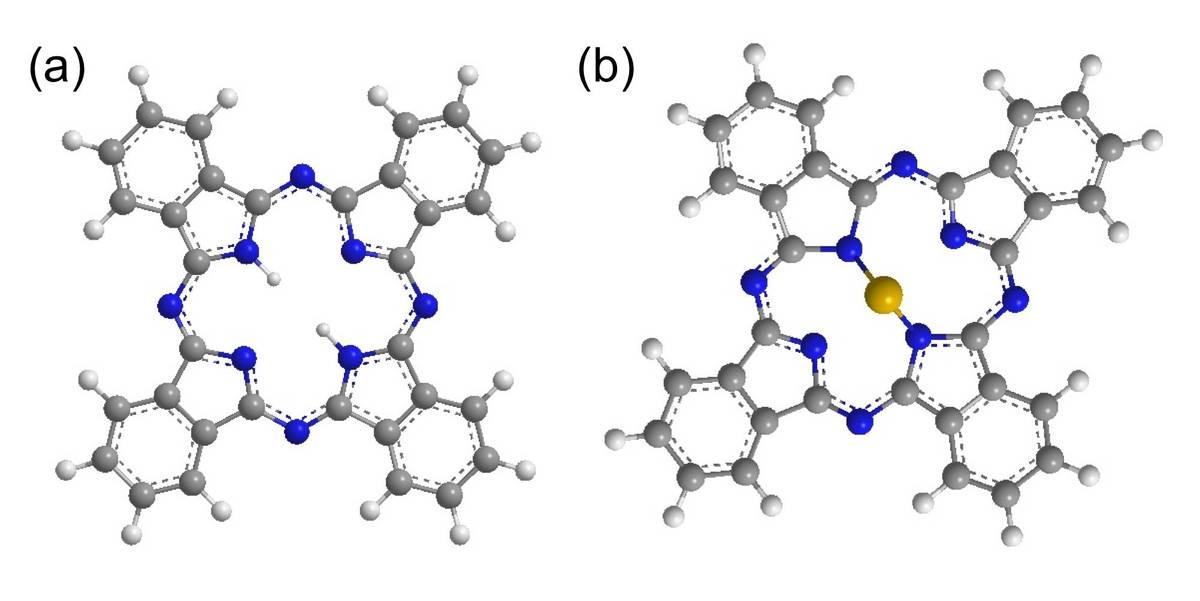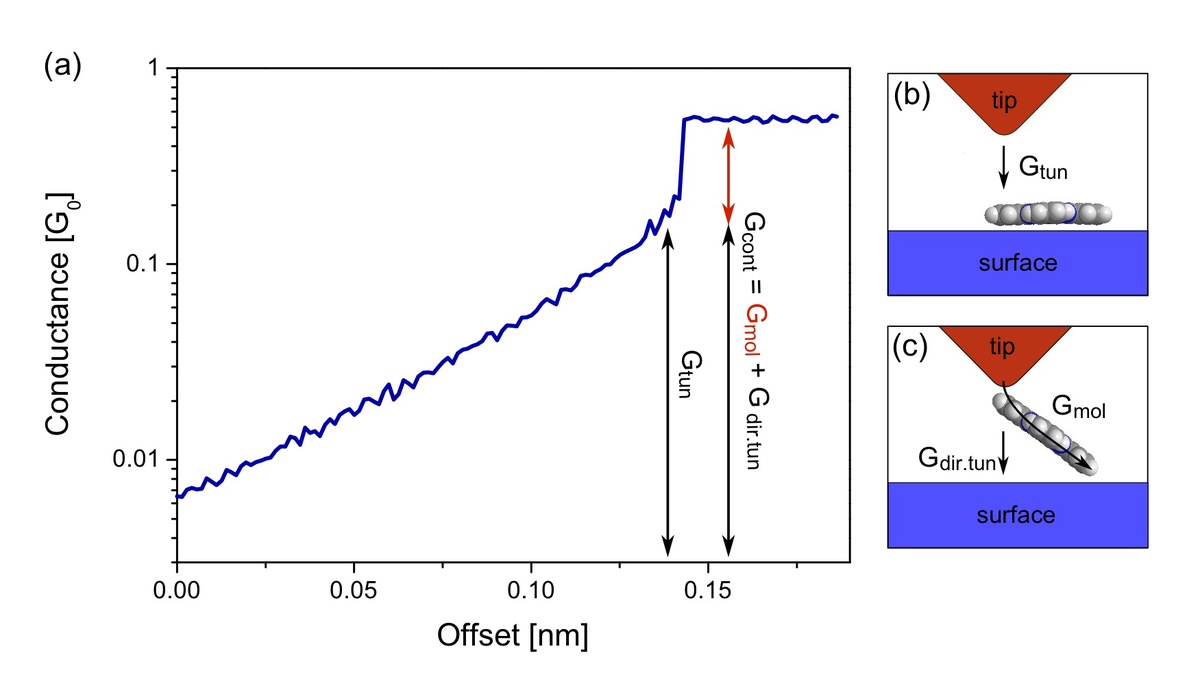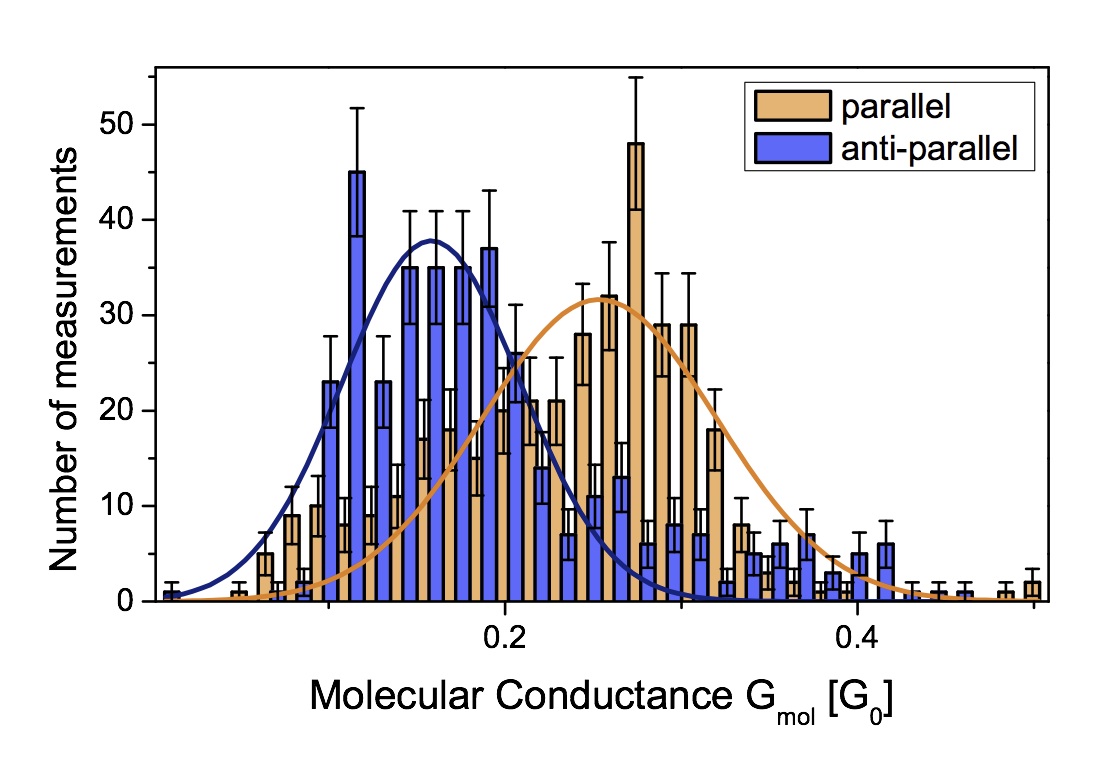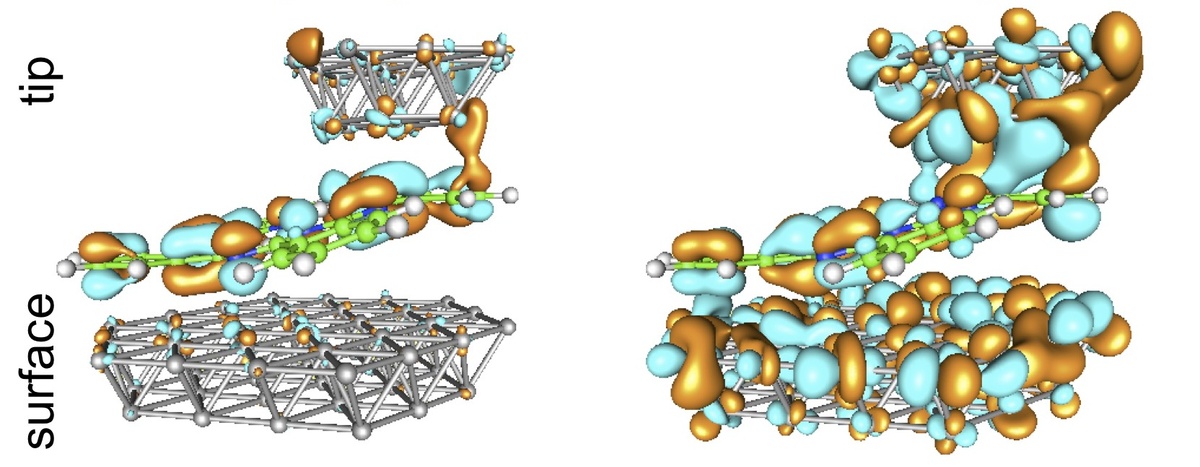C4.10: Electron Spin Transport through Single Molecules with STM
Subproject Leader: Wulf Wulfhekel
Contributing Scientists:
Present: Ferdinand Evers, Alexey Bagrets
Past: Stefan Schmaus, Toyo Katsu Yamada, Yasmine Nahas,
ICPMS, Strasbourg: Martin Bowen, Eric Beaurepaire
Molecular Spintronics
Modern microelectronics is based on a “top-down” process, in which the small structures on a chip are created by lithographic means. While this approach has been extremely successful in the past, further downsizing is linked to exploding manufacturing costs. A potential way out of this dilemma is a “bottom-up” approach in which chemistry is utilized to fabricate in a cost efficient way atomically identical functional units in form of organics molecules. Further, modern electronics relies on the electron charge as the information carrier (current on and off), which causes a high energy consumption and a volatile information handling (turning off the power of a computer deletes all its information). In spintronics, the spin of the electron is used to encode information. These spintronic devices are used nowadays already in magnetic sensors for read heads of hard disks or non-volatile magnetic storage elements. The aim of this project is to combine spintronics with molecular electronics and realize cost and energy efficient nanoscopic devices.
Contacting a Single Molecule
To actually contact single molecules of typical sizes of just 1 nm with at least two contacts in a well defined way is an experimental challenge. In the study of project C4.10 “Electron and spin transport though single molecules”, we focused on metal-organic molecules of the Phthalocyanine family often used as dies in ball pens and contacted them at one of their four organic side groups with an atomically sharp tip of a scanning tunneling microscope (STM). When gently touching the molecule with the STM tip, the molecule bridges the vacuum gap between tip and the metallics substrate and forms a resistor of well defined resistivity. [1]
Giant Magnetoresistance of a Molecule
Two terminal molecular devices are the simplest devices but offer little functionality besides their resistance. To obtain a useful device, the resistance of the device needs to be externally controllable. When using magnetic electrodes to contact the molecule, the molecular resistance depends on the relative orientation of the electrodes magnetization direction (Giant magnetoresistance effect). The resistance of the device can than be influenced by an external magnetic field. We managed for the first time to realize these magnetic sensors on basis of a single molecule and were able to obtain large magnetoresistance values (>60%) in combination with a low resistance (<50kΩ) perfectly matched for high frequency molecular spintronic applications [2].
References
| [1] | A.F. Takacs, F. Witt, S. Schmaus, T. Balashov, M. Bowen, E. Beaurepaire, W. Wulfhekel, Physical Review B 78, 233404 1-4 (2008) |
| [2] | S. Schmaus, A. Bagrets, Y. Nahas, T.K. Yamada, A. Bork, M. Bowen, E. Beaurepaire, F. Evers, W. Wulfhekel , Nature Nanotechnology 6, 185-189 (2011) |
List of Publications 2006-2011 as PDF
Subproject Report 2006-2010 as PDF



